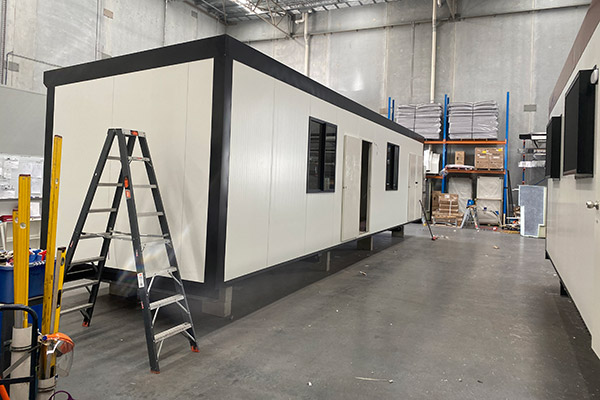Today’s construction industry is rapidly evolving to include green, cost-effective, and durable elements whenever possible. This shift sets the stage for an increase in prefabricated construction, typically called prefab.
Over the past several years, prefabricated construction has expanded with expectations for continued increase. The 2023 market size of USD 9.79 billion is on pace to increase to USD 12.45 billion by 2028.
The reason for this growth involves several factors, including the advantages inherent to prefab. These include:
1. Cost-Effectiveness
Keeping project costs reasonable is a constant struggle on construction sites. Prefab construction helps decrease costs by lowering the number of on-site employees needed for a build. Materials used in prefab buildings have standard sizes, cutting down on time spent on prep work. Additionally, the products can be purchased in bulk for a cost reduction.
2. Off-Site Quality Control
When the prefab materials are manufactured in an outside facility, they are checked to ensure quality before they are shipped to builders. The prefab products also must meet government standards before leaving the plant. At any given time, you have a minimal chance of flawed materials finding their way to your job site.
3. Low Impact from Weather
Construction during the rainy season or amid a broiling heat wave takes a toll on the team and the materials. Because a great deal of the work is complete when prefab materials arrive on the work site, there is a reduction in time spent on the elements. Additionally, all products are made in climate-controlled conditions.
4. Accelerated Construction Process
The amount of time spent on prefab construction is around 50 per cent of the time a traditional build takes. The careful preplanning and exacting standards from the materials’ production significantly reduce the time needed for conventional construction. The fast turnaround time allows builders to complete their projects and grow their profits faster.
5. Greater Safety
Construction sites are famously dangerous, no matter how much caution the team uses. Prefabrication eliminates many unpredictable elements usually associated with the construction industry. Construction sites have fewer weather-related accidents. There are fewer issues with dirt, moisture, and other environmental hazards because workers create sub-assemblies in factory-controlled environments. The fact that there are fewer moving parts on a prefab construction site also reduces the chance of accidents attributed to human error. Additionally, all prefab materials are manufactured to exacting standards set by government organisations.
6. Environmentally Friendly Construction
Prefabricated construction is inherently more environmentally friendly than traditional construction. Most construction sites have a great deal of exhaust fumes, dust, debris, insulation fragments, and wasted materials. A prefab construction site has a significantly lower environmental impact than those creating traditional builds. In addition to cleaner building components, prefabricated construction parts can be made using various materials that are not from endangered sources. Any unused materials from a prefab site can be reused elsewhere or recycled outright. The fabricating facilities also have strict standards overseeing air quality, and emission standards must be maintained. Since there are fewer materials needed at each job site, prefab reduces the number of vehicles required to deliver materials.
7. Flexibility
Working with prefab construction elements adds a new level of flexibility to your builds. There are several building plans developed to fit many needs. You can also work with a designer to create customised plans if you require something beyond the standard designs. Not only does this provide more control for you, but you do not need to incur the costs of hiring an outside designer and architect to draw up blueprints.
Aside from control of the design, prefab construction projects can be expanded when added space is necessary. Modular extensions are a low-cost alternative to the way traditional buildings are developed. The materials will match the present build, and the construction will take a little time. When you consider the alternatives of making new plans, then struggling to find matching materials or breaking ground on a new site and starting from scratch, a modular extension to a prefab building is an easy choice.
If a building is no longer needed or must be moved to a different location, dismantling is straightforward. In the case of vacating a building, this is cost-effective and environmentally sound. The materials can be reused or recycled. Additionally, the dismantling will be clean, with no explosives necessary.
If you are considering prefabricated construction, reach out to us at Fox Transportables. We are Western Australia’s premier transportable builders. Our team of expert designers and builders has decades of experience and a customer service ethic beyond compare. We offer the best range of prefabricated customisable moveable buildings to meet your needs. Our homes, portable toilets, dongas, various types of worker’s accommodation, classrooms, and offices are all built with pride to rigorous standards. You can choose from standard models or work with our designers to customise the ideal building. We will do more than meet your needs. Fox Transportables will exceed your expectations.


